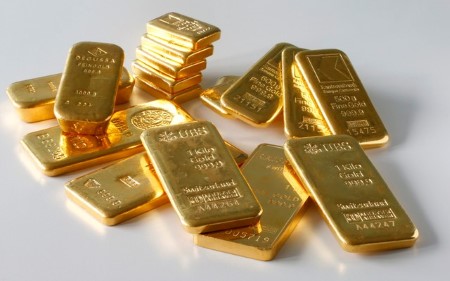




Philippines Trade Update: Trade trajectories trend along
 DOWNLOAD
DOWNLOAD

Policy Rate Updates: Double cut finale
 DOWNLOAD
DOWNLOAD

Monthly Economic Update: One for the road
 DOWNLOAD
DOWNLOAD


Gold slides over 1% as strong US jobs data clouds rate cut bets

Dec 8 – Gold retreated back under USD 2,000 an ounce on Friday as the dollar and Treasury yields strengthened after traders trimmed bets for US interest rate cuts to materialize by March following stronger-than-expected jobs data.
Spot gold fell 1.4% to USD 2,000.49 per ounce by 2:15 p.m. ET (1915 GMT) after hitting a session low of USD 1,994.49 earlier. Prices were down 3.4% so far for their worst week in ten.
US gold futures settled 1.6% lower at USD 2,014.50.
US job growth accelerated in November while the unemployment rate fell to 3.7%, signaling underlying labor market strength that made traders bet that it could take the Federal Reserve until May to deliver the first reduction in a series of interest-rate cuts next year.
“Gold has slumped as the US employment report showed strength across the board,” said Tai Wong, a New York-based independent metals trader.
“This close at lows, USD 150 below Sunday’s all-time high, has shifted the narrative on the Fed meeting. Now, gold bulls are hoping for a friendly Fed result that will prevent a deeper correction, if not a rout.”
The dollar index firmed 0.7% for the week, making bullion more expensive for overseas buyers, while 10-year Treasury yields rebounded from three-month lows.
Traders awaited up-to-date interest rate projections for next year from the Fed policy meeting on Dec. 12-13.
“With a great deal of easing already priced into the market, both silver and gold will continue to see periods where convictions could be challenged,” Ole Hansen, Saxo Bank’s head of commodity strategy, said in a weekly note.
Physical gold dealers in India increased discounts to seven-month highs this week to lure customers as record local prices hurt demand.
Spot silver lost 3.3% to USD 23.00 per ounce, eyeing its worst week since October 2022.
Platinum gained 1.3% to USD 919.01, while palladium fell 2.44% to USD 945.94. Both were set for weekly declines.
(Reporting by Anushree Mukherjee, Ashitha Shivaprasad, and Deep Vakil in Bengaluru; Editing by Shilpi Majumdar and Maju Samuel)
This article originally appeared on reuters.com





 By Reuters
By Reuters